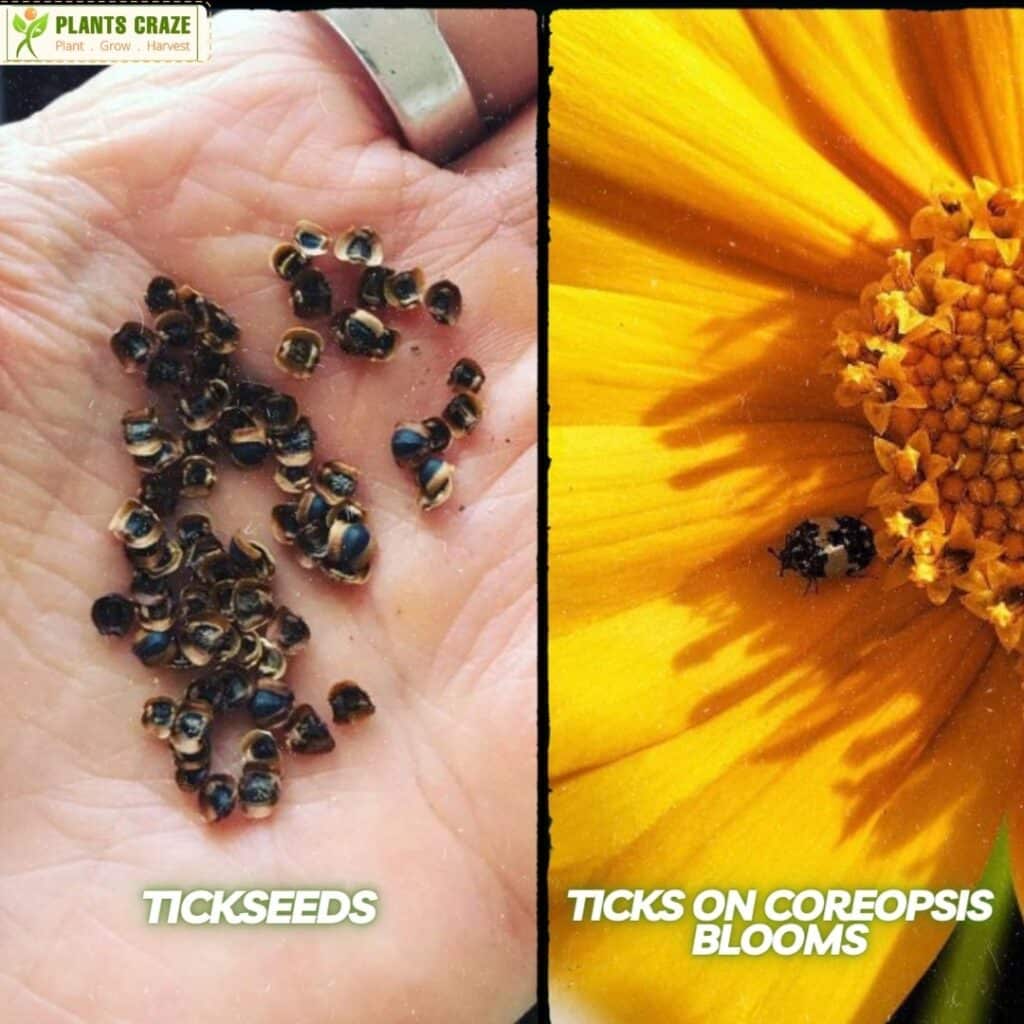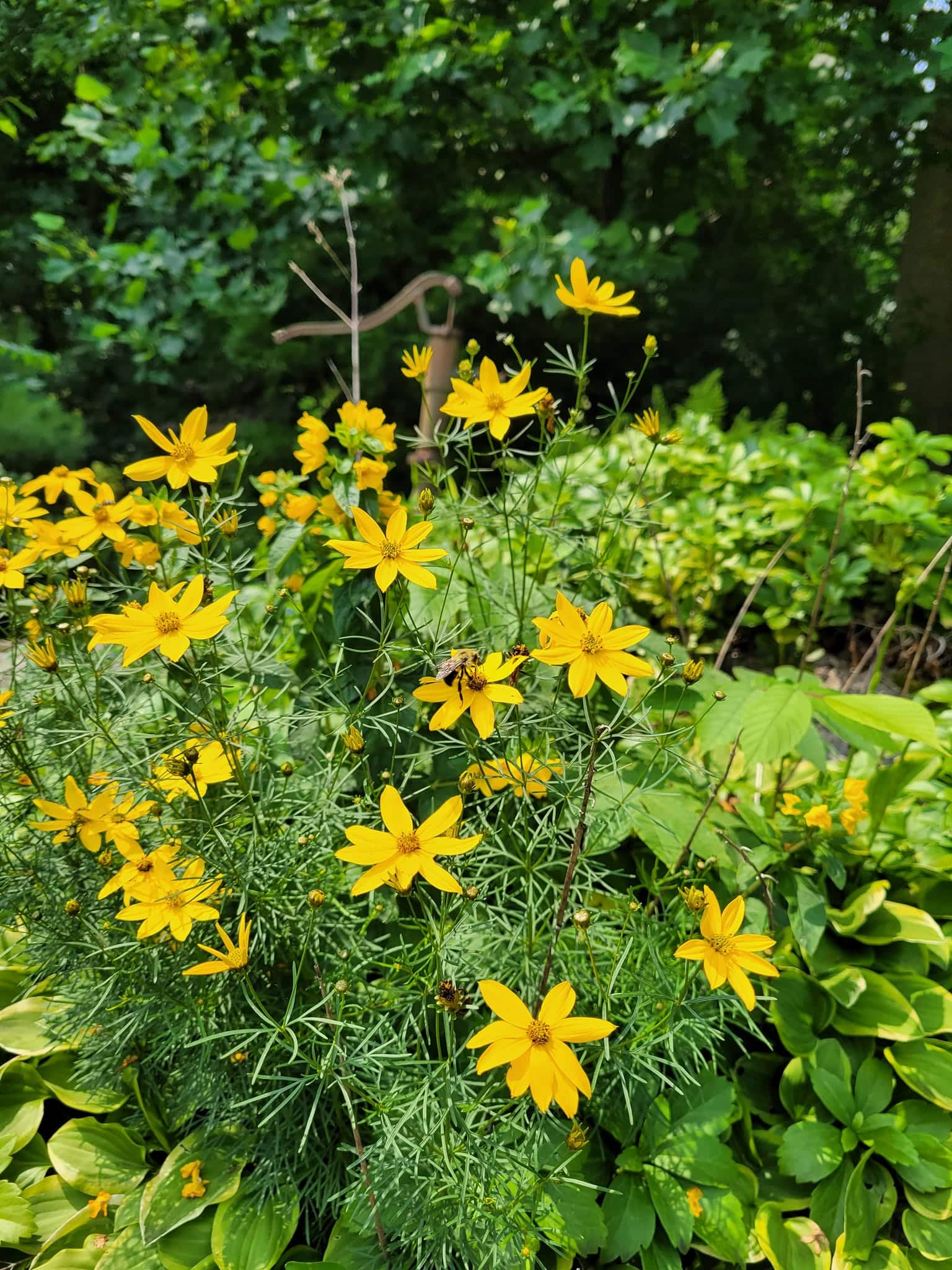As many gardeners, are you drawn by the beauty of Tickseed spread and the vibrant color it displays that you wish to replicate?
Then it may come in handy to understand its growth habit beforehand.
Do you wonder how? Continue reading to learn more about Tickseed spread and how to control or prevent it.
Table of Contents Show
What is Tickseed? (Growth Habit of Tickseed)
Tickseed (coreopsis or calliopsis) is primarily known for its tiny, oval, dark seeds resembling ticks, but that is not all.
Did you know Native American tribes harvested Tickseed flowers to prepare traditional medicines and dyes and make perfect cut-flowers?
A fervent flowering plant is from the Asteraceae family, known for producing colorful flowers attracting pollinators.

Tickseed comes in orange, pink, or red shades, producing tick-like seeds.
It may take a bushy appearance and reach 1-4 feet in height, especially during active growing seasons, spring and summer.
Keep in mind different coreopsis varieties exhibit slightly different growth habits.
| Variety | Height | Growth Speed/Duration |
|---|---|---|
| Coreopsis grandiflora | 12-24 in (30-60 cm) | Moderate to Fast / 2-5 yrs |
| Coreopsis lanceolata | 12-36 in (30-90 cm) | Moderate / 2-4 yrs |
| Coreopsis tinctoria | 12-36 in (30-90 cm) | Moderate to Fast / 1-2 yrs |
| Coreopsis verticillata | 18-36 in (45-90 cm) | Slow to Moderate / 2-4 yrs |
Depending on the local climate and temperature, they grow throughout USDA zones 4-10 as perennial or annual.
When left uncontrolled, these plants spread as far as their seeds are dispersed, sometimes engulfing the entire garden.
Does Tickseed Spread?
As previously mentioned, Tickseed does tend to spread when grown outside its native region.
Typical of flowering plants, Tickseed will bloom to produce seeds from April to June. However, you will only get the seeds once the flowers mature into fruit in summer.
These fruits look flat with a small and dry appearance. As they burst open, the seeds are carried by wind or pollinators.
Therefore, almost every Tickseed variety will spread as long as you allow it to disperse its seeds.
Factors Affecting Tickseed Spread
Here are a few reasons how and why Tickseed spreads.
- Self-Seeding: Tickseed plants grown outside will pollinate and self-seed. When the flowers fade and the seed heads mature, they disperse seeds on the ground, forming new plants.
- Wind and Wildlife Dispersal: Because of their tiny and lightweight stature, the seeds are easily carried away by wind or birds to new areas. Additionally, birds and other animals may feed on the seeds and disperse them through their droppings.
- Rhizomatous Growth: Coreopsis verticillata, particularly, has rhizomatous growth habits, meaning their roots will spread underground, producing new shoots. It allows the plant to colonize larger areas over time.
- Clump Expansion: They typically grow in clumps, which can expand in size when left unpruned. It may produce additional basal shoots, leading to further spread.
- Environmental Factors: Factors such as ample sunlight, suitable soil fertility, and adequate moisture levels can promote healthy growth, leading to potential spread.

Controlling Tickseed Spread
There is little you can do to control the thriving invasive Tickseed colony.
Their tall appearance will shade ground plants from the sun, depriving them of lighting; therefore, you can limit their spread with timely intervention and prevent predators like deer from wandering around.
Thus, it would help if you were proactive about controlling Tickseed spread. Here are a few handy tips for you.
1. Practice Division
Consider dividing Tickseed plants if they are spreading too rapidly.
Dig up the clumps, separate them into smaller sections, and replant them in desired locations, usually a pot for more controlled growth.
2. Dig Out Rhizomes
Dig up the roots and remove as much of the root system as possible.
You can use a garden fork to help separate the roots from the soil, but remember to dispose of them properly.
You need not worry about poisoning from Tickseed plants’ sap.
3. Mulch to Suppress Growth
Applying a layer of organic mulch, including pine mulch, over the affected area will suppress the growth of Tickseed seeds or seedlings.
Mulching prevents the sunlight from reaching the seeds and forbids the seed from landing on the ground.
3. Chemical Control
In severe cases, you may consider using herbicides labeled for Tickseed control.
However, follow the instructions and safety precautions as advised and avoid spilling it on other plants to reduce the risk of damage.
4. Selective Pruning
As a preventive measure, deadhead the spent flowers of Tickseed plants before they begin seeding.
It prevents them from dispersing seeds and reduces the chances of self-sowing and unwanted spread.
5. Create a Barrier
Instead, use physical barriers, such as edging or root barriers, to contain their spread.
In fact, it will control their invasive growth and save you a lot of time trying to uproot them in the future.
From Editorial Team
Additional Tips!
Growing Tickseed plants in pots to control their growth and avoid accidental spreading.
Otherwise, grow Tickseed only if you live in their native region, where they are less likely to turn invasive.
Do not forget to harvest fresh Tickseed flowers to make beautiful cut flowers for different decorations.
